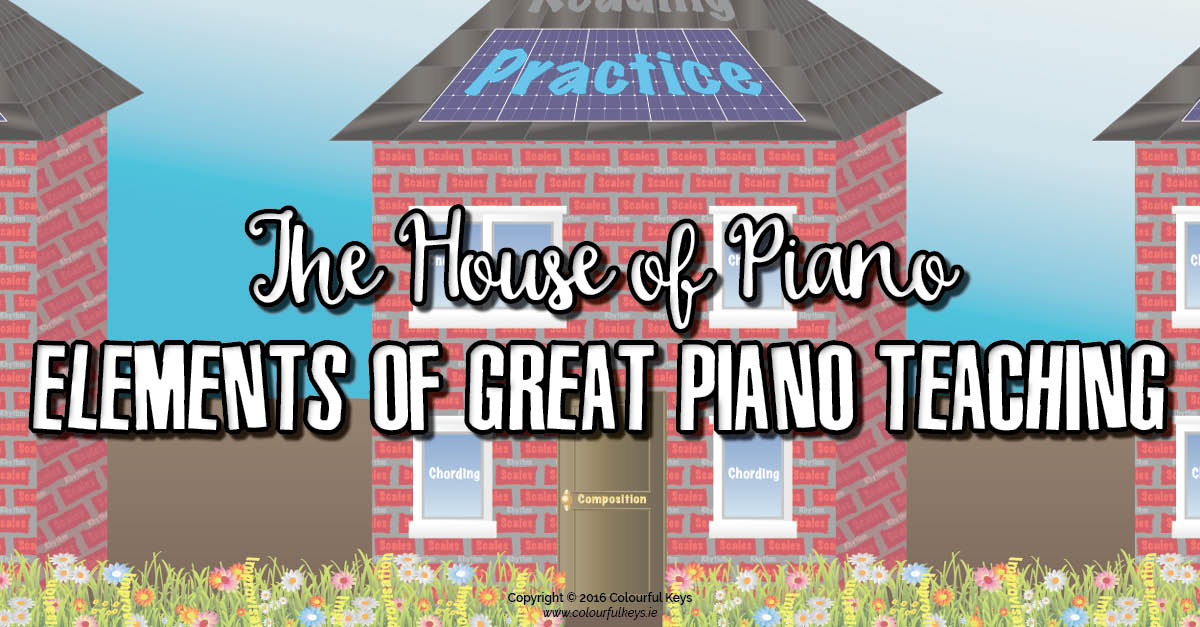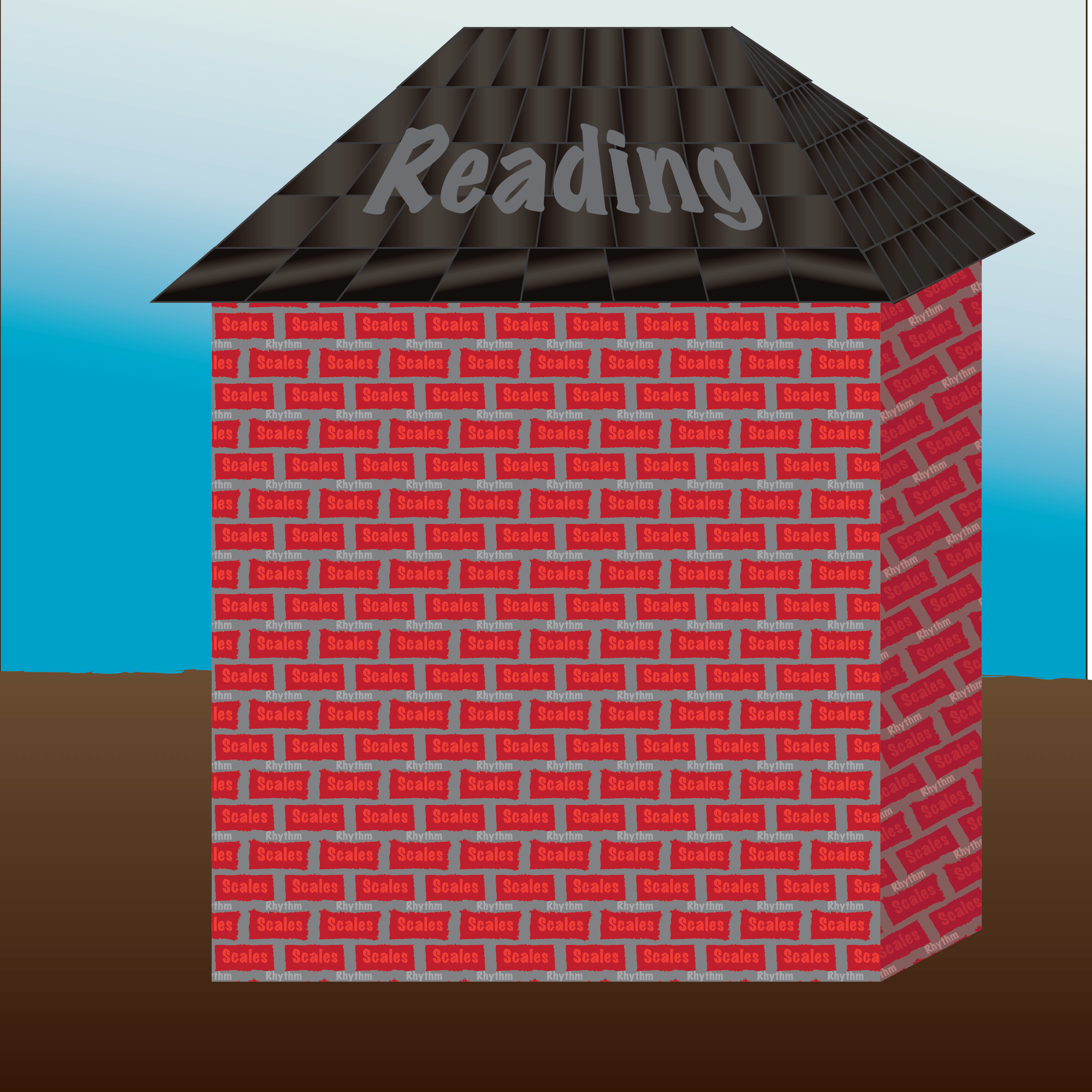Some “traditional” piano lessons, like the ones I had for my first 4 years as a piano student, take a very narrow approach. There are many things I feel were left out of my own piano lessons.

A normal lesson goes something like this:
- Student comes in, teacher request scales and/or technique that the student was assigned the previous week.
- Teacher comments on how these went and assigns new scales and exercises for this week.
- Rinse and repeat with repertoire. Blah.
No wonder many adults I talk to ended up quitting and regretting it later, they weren’t exposed to the whole exciting world of making music.
Imagine piano studies as a house…
Scales are the building blocks of music, rhythm is the cement that holds it all together, and good reading skills are the roof that keep us warm and safe. All sounds pretty good right? Structurally sound? Let’s take a look at that house.

Hmm…I think there may be a few things missing here don’t you? Let’s think about at some embellishments we might add to our house of piano.
Composition
First off, how on earth are we going to get inside this fortress? Surely, we need a door.
By teaching my piano students to compose their own pieces they will understand how the music is constructed. They soon see the need for all those pesky theory concepts that teachers try to drill into them. Students are immediately engaged when they are working on their own music, and will actively look for the theory – rather than it being pushed on them.
When we’ve written music (however simple!) ourselves we see the pieces we’re playing differently. I discuss the benefits of composing further in the post ‘Why compose? Isn’t it enough to teach students to read music?’.
Chording
Chording and playing from lead sheets allows freedom in playing, and affords a view of the big wide world of music that can be created at the piano. I love classical music. But I also love almost every other genre of music, and the piano is involved in a huge amount of it.
I don’t believe in keeping students in the dark. Everyone’s tastes are different and we as teachers need to be giving them the freedom to explore theirs. Read my post on lead sheets to find out how to get started with chording.
Improvisation
Improvisation is almost like a rebranding of scales. Scales 2.0!
Piano students have spent all that time dutifully memorising a scale and what does a teacher do? Assign the next one immediately?! That’s not much of a reward in my opinion.
I try to show my students the why of scales. There is a reason for becoming comfortable with that particular pattern of notes. It should be applied immediately, find them in the pieces you’re working on, and have fun with them. Improvising at the piano also instills a internal beat and gives a greater understanding of rhythm and melody.
If you’re looking for ways to get started with teaching improvisation, you’re going to want to read this post on The Big Secret of Teaching Improvisation.
Practice
This may sound a little odd. But yes, I teach my piano students how to practice. I wasn’t taught to how to practice and I think it’s a great shame that it’s not a bigger part of piano teaching in general.
After all, far more time is spent practicing than in lessons each week. I believe in teaching my students strategies that will help them become more self-sufficient. Giving them the skills to continue playing long after they have stopped taking lessons with me.
Add some solar practice panels to a students house of piano and they will be able to power their own practice time. 😉

What would you add to your house of piano?
Are there things you think were left out of your own piano lessons? What do you teach your students that you weren’t taught?
P.S. If you’re looking for ways to get your students thinking and being creative with their practice, check out my Playful Practice and Pensive Practice cards.

Thank you for this post which struck home. Think it’s time to plan those windows and doors in my lessons. When it’s group lessons then we really explore composition, rhythm work, chording, etc. But for a 30 minute lesson it’s always beat the clock, isn’t it?
Thank you,
Sarah – near Brussels, Belgium
Hi Sarah! Glad you enjoyed the post! I agree, it can be hard to cram everything into 30 minutes, you might want to try rotating some of the extra parts of the lesson, so the first week of the month could be “composition week” for everyone, the second week “improvisation week” etc.
hello miss ncantan thanks for your good works in music it’s very interesting!